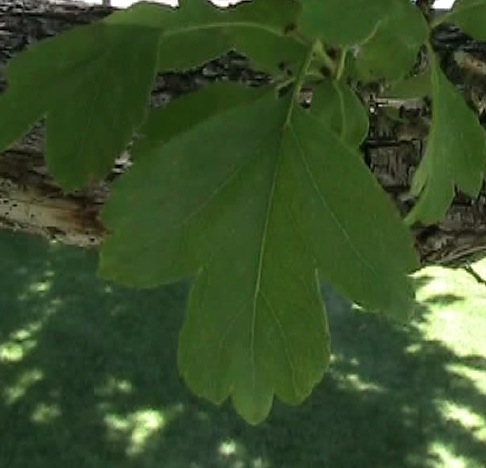| PSC 2620: Woody Trees and Shrub | Course Home | Week 7 |
Crataegus laevigata - English Hawthorn
Plant Viewer
 |
 |
| The blossoms of the Hawthorn provide a spring show (Crimson Cloud). | Red pome fruit is 1/2 inch and forms in bunches. |
 |
 |
| Leaves are multi-lobed and may be serrated, typically under 3" in length. | The thorns are one inch long and are located at both the axillary and terminal bud. |
Plant Description
Crataegus laevigata, or English Hawthorn, is a popular small flowering tree. Ir grows 15-20 feet high and wide, with rounded, but somewhat wild looking canopy. It grows slowly, forming a densely-branched canopy that often exhibits some twisted limbs that give the tree a gnarled and ancient look. It is extremely tolerant of soil and climatic conditions and will grow well almost anywhere once it has been established.
The bark of the tree is gray-brown and develops a very rough texture similar to that of an apple tree. The 2 inch long leaves have multiple rounded lobes and are reminiscent of a small maple leaf. They are dark green and have a finely serrated margin. They are arranged alternately on the stem. The small leaves give the tree a fine texture. Thorns form at the base of the leaves and, while smaller than the thorns found on many other species of Crataegus, they are still painful to grasp.
In the spring the tree is covered with small, single blooming white blossoms. The blooms are about half an inch wide and form on corymbs. They flowery shortly after the leaves have emerged and last for 3-4 weeks. They are extremely showy for a two week period at which point they are on par with any other flowering tree. Following the blossoming, small, 1/2 inch pome fruit forms at the end of summer. It turns red in color and is a popular treat for birds.
Landscape Use
English Hawthorn makes a beautiful specimen tree thanks to its mildly-tortuous growth and showy spring flowering. It is excellent to use as a lawn tree as well. Although its tolerant nature makes it ideally suited for use as a parking strip or parking lot tree, its thorns can be an unpleasant surprise to the unsuspecting pedestrian. Additionally, the fruit is not persistent, and can become a mess on the sidewalk.
Points of Interest
Hawthorn is susceptible to fireblight and also leaf spot.
Notable Cultivars
Crimson Cloud Single red blossoms have a white center. Grows more upright than the regular species and has improved resistance to fireblight and leaf spot.

Paul's Scarlet One of the most beautiful flowering trees I have ever seen. The blossoms are double blooming with red coloring on top of the petal and light pink or white underneath. They form in clusters that are reminiscent of small roses. Very susceptible to both fireblight and leaf spot, but do admirably well here thanks to our dry climate.
